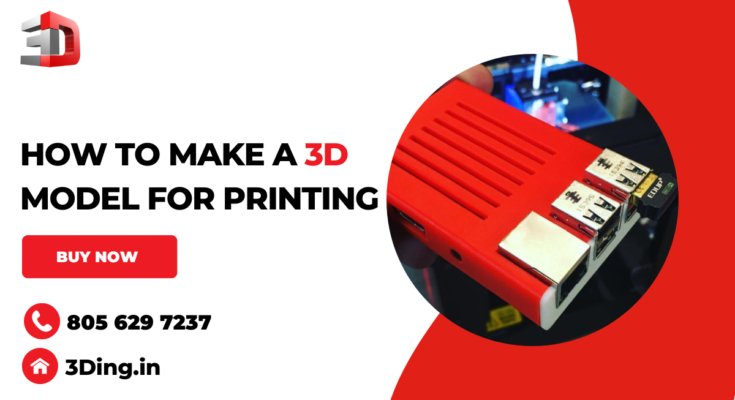Expecting an efficient 3D Model for your printing can involve various steps. Look at the given guidelines and sources to know more about “How to make a 3D model for printing?”
We have certain rules to make models for 3D printing
You can’ expect all the 3D models are efficient for 3D printing. When you are trying your own model, then it is recommended to keep these rules in your mind prior you begin.
Models should be watertight
The initial rule is that a 3D printable model must be watertight or “manifold.” Where it is meant to be a model should not have any holes in its shapes ie. Occupied. Ensure that each surface intersects with each other surface reference to the well-defined edge.
Major CAD platforms must have a function that ensures whether the model is manifested or not. If not, you need a slicer software to check the model needs to proceed next. For such needs, you can contact a 3D printers in Bangalore.
Designate wall thickness values
On the other hand, the 3D printer cannot imitate a paper-thin wall. To escape from these issues, try to assign each wall in your designed model the maximum thickness value. Prefer creating a separate solid model. This can be excavated out while the process of slicing. Finally, you can replace using the infill pattern.
Remove overlapping surfaces
Overlapping surfaces are frequently overlooked because they never state any exterior part of the model. However, still you need to come across issues if your model has to be sliced for 3D printing.
You can expect these overlapping issues if your chosen model is made with a combination of two or more pre-built models. If there is no trace of tolerance in the intersection, while adding or subtracting one shape from the other -it can eventually end up in paper-thin walls. You can expect the best 3D printing support by getting instant support from 3D Printing services in Bangalore.
Note: You cannot expect any shortcuts but rather be systematic if you have combined two pre-built models with each other.
Eventually, you can expect the other rule that can bring a specific 3D printer. For instance, a model designed for resin printing should integrate drain holes that can bring a hollow section. If it is an FDM printing, get the knowledge on the exact nozzle size of the printer which can be useful in assigning wall thickness values reference to your model.
If you see the design is more complex for models, you may get ruined and ready to face more challenges of 3D printing. The reason can be you can face 3D printing nozzle issues like it may be too large to recreate some of your details properly. This can eventually end up in less-detailing output. Try to add “creative” supports to your models to get extensive support structures while 3D printing.
Conclusion:
Our 3Ding experts can bring the best model which can be generated by yourself. At the same instance, you can easily enhance your 3D printing skills in accordance with many web sources and knowledge as per this blog.




